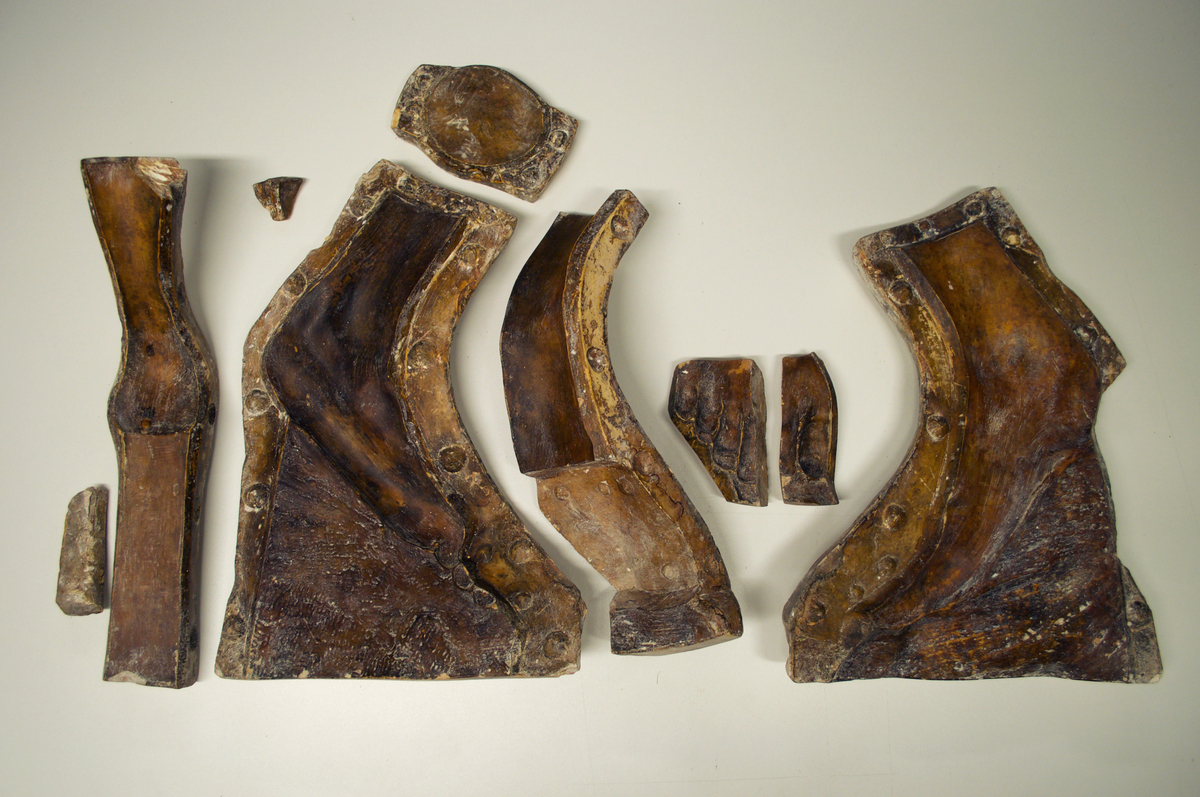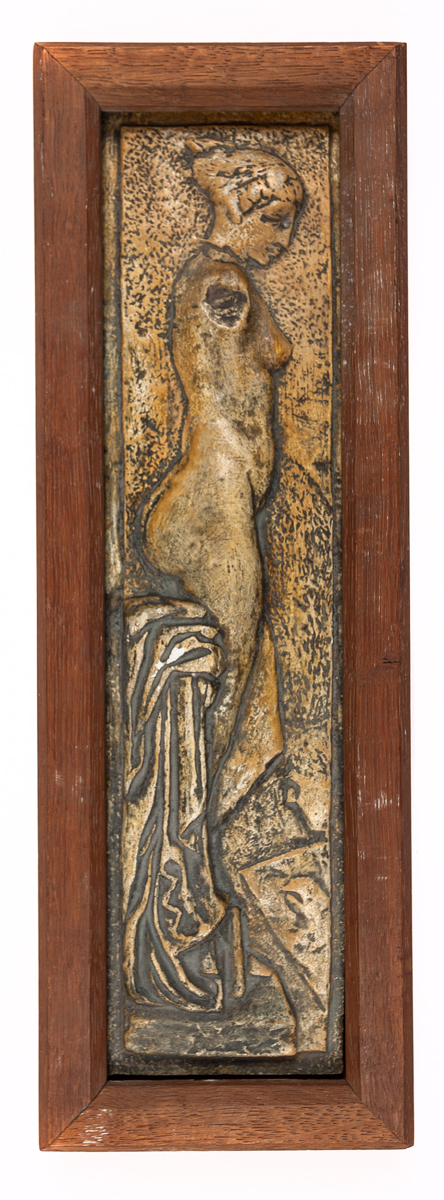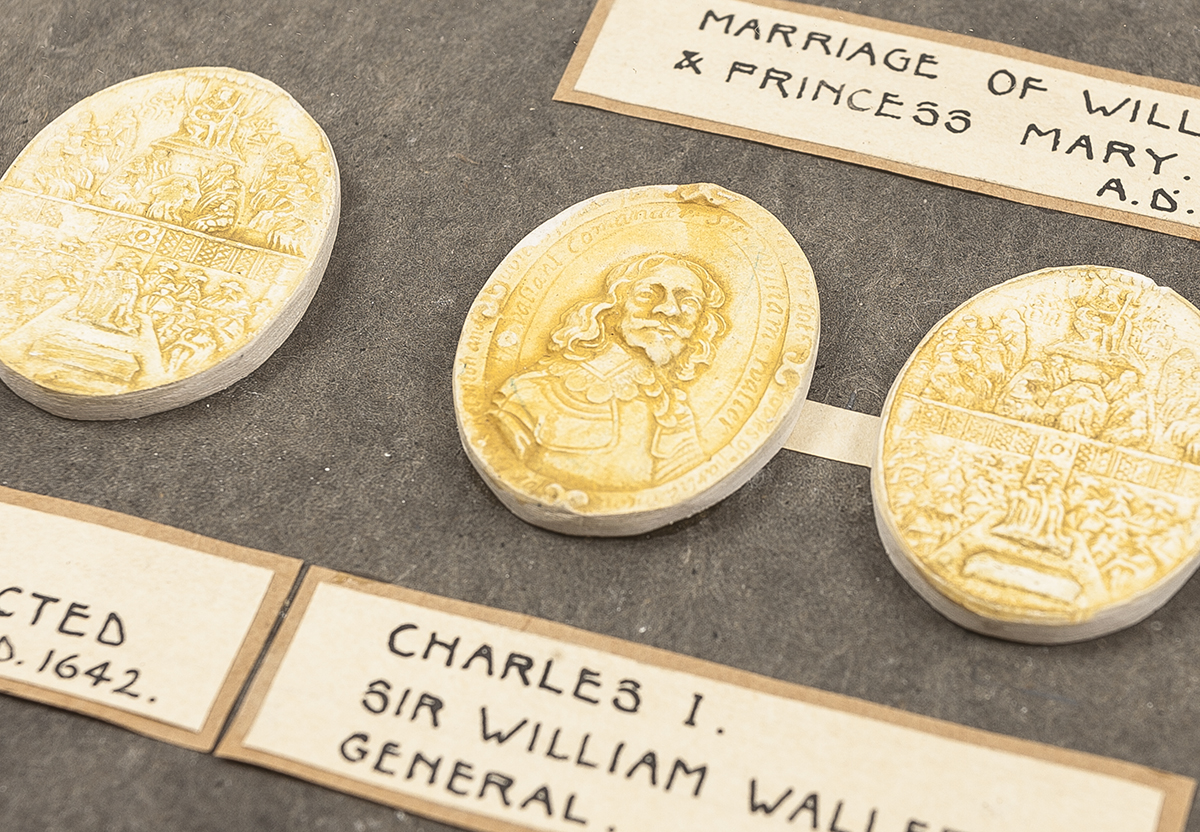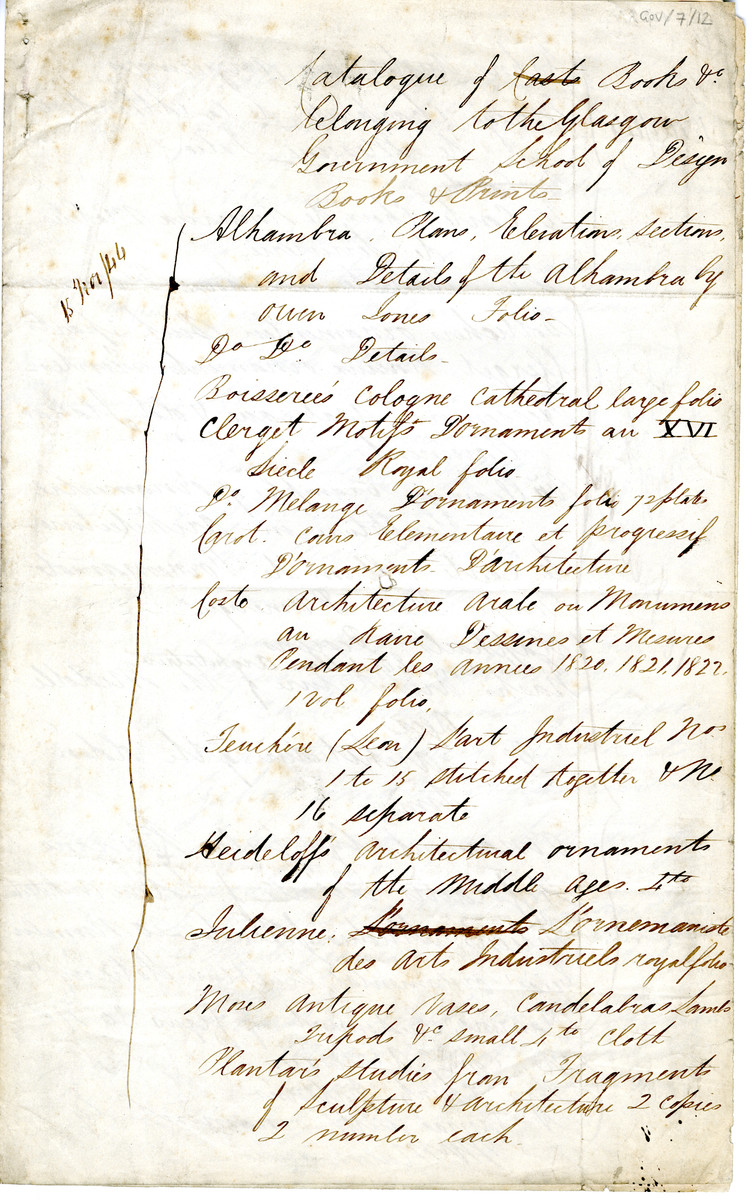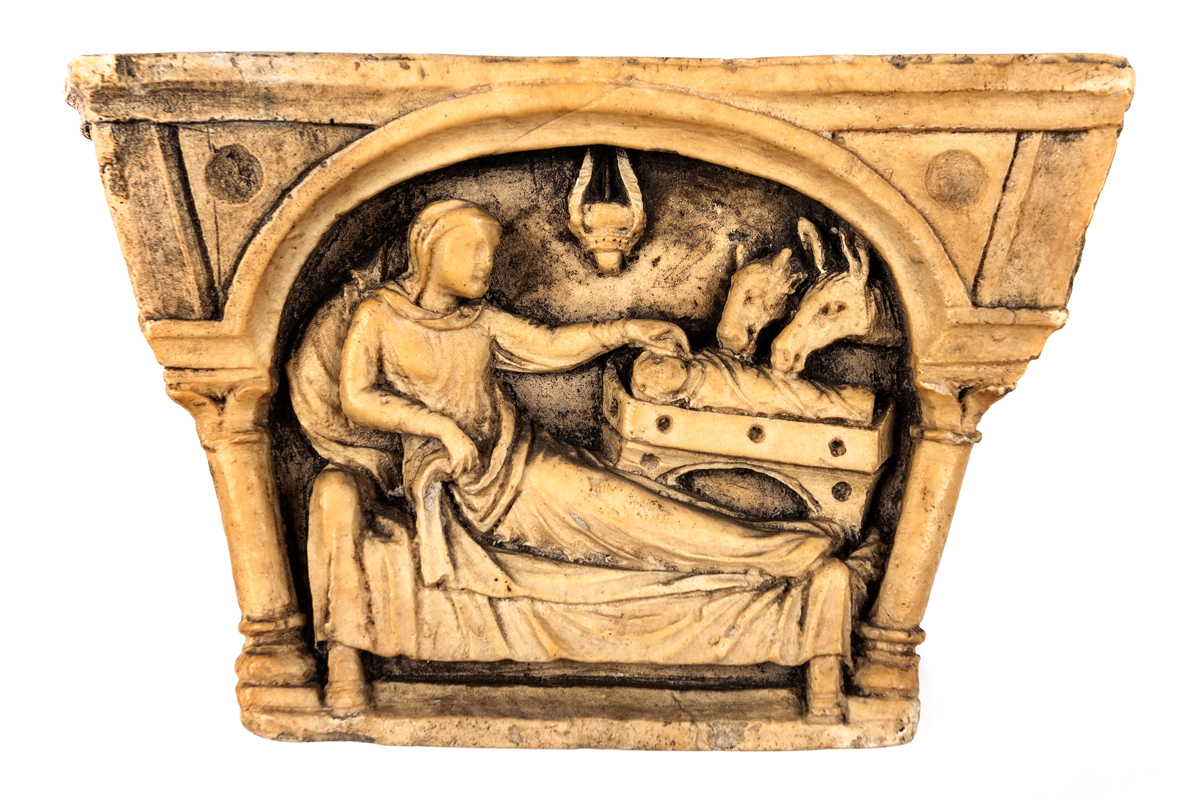Plaster Casts
The Glasgow School of Art’s holdings include around 220 plaster casts, ranging from full-size reproductions of Greek, Roman, medieval, and Renaissance European sculptures to smaller-scale architectural and decorative details, as well as a selection of casting moulds. Up until 2014, GSA’s plaster casts were located in the Mackintosh Building and other campus buildings. Now, many of GSA’s larger-scale casts are in the Reid Building and the Stow Building.
Our archives trace the importance of plaster casts to teaching since the School’s founding in 1845. The first major inventory dates to 1849[1], and the plaster casts listed include a complete grouping of the Laocoön. Along with gifts and donations, acquisitions continued from the second half of the 19th century to at least the 1920s. Inventories and catalogues show that suppliers for direct purchases included D. Brucciani & Co., the Glasgow-based firm Giusti & Co., and workshops in Paris, Brussels, and Berlin.
Photographs in the 1900 inventory show plaster casts within the Mackintosh Building’s studios and corridors, with architectural and decorative examples vying for space with anatomical and sculptural specimens, right down to plaster fruits and vegetables[2]. New acquisitions in 1901 included a central figure of the Laocoön (presumably to replace the previous complete grouping)[3], and a 1909 document records a debate on how to order and display the collection.[4]
Drawing from casts was central to the structured art, design, and architecture education known as the South Kensington system. In 1901, GSA moved to a new curriculum overseen by the Scotch Education Department, and prospectuses under Francis Newbery’s directorate show that the approach held firm. Even as the pedagogical importance of casts declined, room records of the 1950s and 60s list large-scale items, as well as sundries such as ‘David’s Eyes, Nose, Mouth and Ear (1 each)’.[5] Alasdair Gray’s Lanark (1981) and Murray Grigor’s Mackintosh (1968) offer vivid glimpses of how the plaster casts remained a backdrop to the life of the School.
More recently, the casts have inspired creative responses amongst GSA staff and students that echo and expand on those from more than a century ago. In 2008-2010, the Mackintosh Building plaster casts were cleaned and conserved, albeit with no attempt to remove the layers of paint many had received in their lifetime.
After the fire of 2014, Graciela Ainsworth Conservation led a campaign to stabilise a selection of damaged casts, including the Laocoön and the Cantoria Panels, to striking visual effect. Furthermore, the Digital Laocoön project (GSA School of Simulation & Visualisation and ISO Design) explores the affective power of the replica in augmented and virtual reality.
With plaster casts integrated into the campus and our significant archival and creative material, we continue to reflect on and research the role of plaster reproductions in the context of a thought-provoking collection.
- [1] Reference: GSAA/GOV/7/1, 1849 Catalogue: Catalogue of Books, Casts etc. of the School of Ornamental Art, 1849.
- [2] Reference: GSAA/GOV/7/2.
- [3] Reference: GSAA/GOV/7/2, 'New Casts - added 1901', addendum list in 1900 inventory.
- [4] Reference: GSAA/GOV/2/7.
- [5] Reference: GSAA/DIR/13, Box 63, 13/13, H.J. Barnes.
School of Design & Academic Coordinator: Interdisciplinarity
School of Design
The Glasgow School of Art
Sources
- Rune Frederiksen & Eckart Marchand (eds.) (2010): 'Plaster Casts: Making, Collecting and Displaying from Classical Antiquity to the Present' (De Gruyter: Berlin)
- Stuart Jeffrey, Steve Love & Matthieu Poyade (2021): 'The Digital Laocoön: Replication, Narrative and Authenticity', Museum and Society, 19 (2). pp. 166-183
- Mari Lending (2017): 'Plaster Monuments: Architecture and the Power of Reproduction' (Princeton University Press: Princeton & Oxford)
- Thea Stevens (2018): 'The Plaster Cast Collection of the Glasgow School of Art: History, Aura and Experience'. Journal of the Scottish Society for Art History, Vol.23, 2018-19: Art Organisations and Institutions in Scotland, 23. pp. 23-30
- Thea Stevens (2019): 'The Plaster Casts of the Glasgow School of Art: Damage, Conservation and Reproduction.' Celebrating Reproductions: Past, Present and Future, January 17th – 19th 2019, V&A, London
- Veronika Tocha (ed.) (2019): 'Near Life: The Gipsformerei – 200 Years of Casting Plaster' (Staatliche Museen zu Berlin: Berlin)
- Rebecca Wade (2018): 'Domenico Brucciani and the Formatori of 19th-Century Britain' (Bloomsbury Visual Arts: London)




![Ceramic sarcophagus cast · [19th century]](https://gsaarchives.net/catalogue/uploads/r/the-glasgow-school-of-art-archives-and-collections/d/2/4/d240d010df8abc920639ffa2f1658ee7986dbb4af357fe49d361375ac25654ae/NMC_1718_v0002.jpg)
